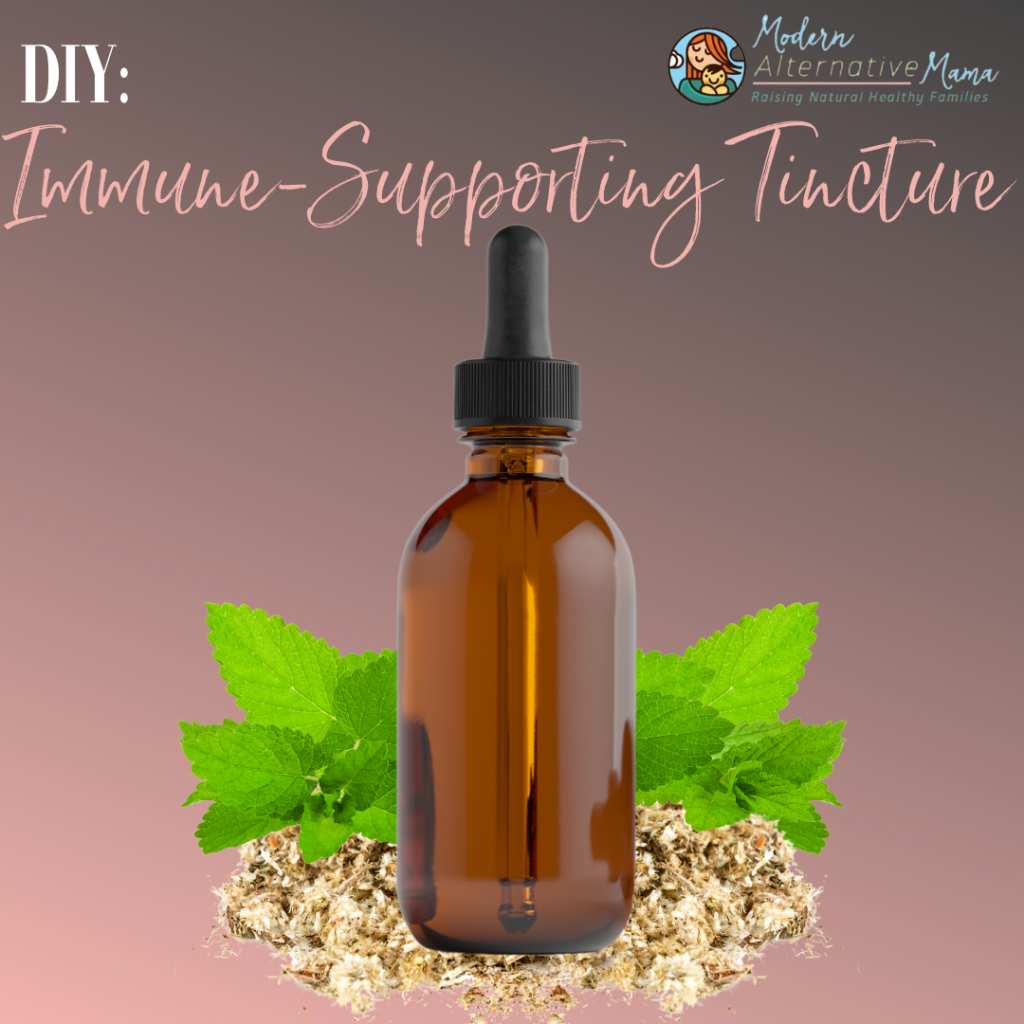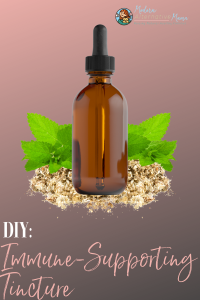Written by Kate Tietje
When I began researching this one, I was originally focused on nutrients known to combat illness, like zinc, vitamin C, vitamin D, etc. I quickly learned that most of these are really going to be found in liver — and I already have liver pills that I make. It seemed foolish to find an inferior source of these nutrients when I already had a great one.
Instead, I turned my focus towards plants that are known for specific functions. I looked at mullein first, as it’s become my go-to cold remedy. That was excellent, so I kept looking up herbs I had on hand to see what fit.
I chose herbs that:
- Promote deep, restorative sleep
- Help clear the body of mucus
- Soothe the digestive tract
- Are known to help sinuses
- Reduce inflammation
- Aid sore throats and coughs
My goal was a collection of herbs that address all major symptoms of illness, help the body heal faster, and promote the rest required to recover. I would combine this with plenty of rest, liver pills, Earthley’s Cod Liver Oil, and perhaps some hot ginger tea (depending on illness). I will take about a teaspoon 2 – 3 times daily while symptoms persist.
Most herbal tinctures are made with fresh leaves and typically measured in weight, but I made it a bit easier for you and did it with dried and measured in volume.
Immune Supporting Tincture
Ingredients:
- 1 cup mullein leaf and flower
- 1/2 cup spearmint leaf
- 1/2 cup yarrow leaf
- 1/4 cup lemon balm
- 3/4 cup vegetable glycerin
- 3/4 cup filtered water
Directions:
Step 1: Gather up your ingredients.
Step 2: Add your herbs to the jar. I am using a pint jar for this.
Step 3: Pour your glycerin in. You will need a spoon or something to stir gently and help it seep into the herbs.
Step 4: Pour the water in and keep stirring gently until the herbs are saturated and everything’s mixed up.
Step 5: Put a lid on it and let it sit for 6 weeks. You want to make this ASAP so it’s ready if and when you need it this winter! You can use these herbs as tea if you need to while your tincture sits, too. When it’s done, simply use a piece of non-fuzzy cloth (I use birdseye cotton) to strain it out. It doesn’t need to be refrigerated but should be kept in glass in a cool, dark place.
That’s it! Super easy.








How do you use this tincture? I’m guessing topical because of the gylcerin…
[…] How to Make a Super Immune Booster Herbal Remedy […]
I have a large array of herbal remedies for winter, for our family of four.
I make thyme cough syrup each year, especially good for kids.
If I am starting to feel unwell, I drink yarrow tea (I pick a load of yarrow over summer).
I burn pine and ginger oils for coughs and colds and to help prevent them, as they stimulate the respiratory system.
I have made up my own health sheet, and it is 12 pages for my go-to checklist for ailments, from asthma to zits!
One thing I am most amazed at is how well yarrow works to stop a cold/flu in its tracks and how well dandelions get rid of warts.
Love your blog
Did you have an adaptation of this recipe that uses vodka instead of the vegetable glycerin? And I’m just curious– how did you come up with the measurements.
I’m excited to try this! I’ve tried some of your other tincture recipes before and love them all.
Like Julia, I’m interested if an alcohol base would work – or if you know of a glycerine that is NOT derived from soy.
Thanks!
can I use fresh herbs chopped finely? what is a replacement for the glycerin ?
Can this be taken daily? If not, I am looking for an immune boost I can give my kids daily. what would you suggest?
thanks!
[…] Mullein has some pretty neat properties, too. It can kill some strains of staph and E. coli, may be effective against tuberculosis, and has been reputed to help with a number of respiratory illnesses (like colds, coughs, pertussis, bronchitis, and more) and to aid in restful sleep. I also use mullein in this immune-boosting tincture! […]
You could sub raw honey for the glycerin but will prob need to be refrigerated. Love thyme lozenges! One thing I might add to this tincture/tea recipe is marshmallow root! Amazing for soothing digestive system or any flu symptoms.
[…] I like to use the herb mullein for illness. It helps with respiratory illnesses as well as digestive (I tend to use for respiratory mostly). Make a tea with 1 tsp. of mullein to 1 c. water, or add a handful of mullein for an infusion (much stronger). Or, try this immune stimulating tincture. […]
I mixed this together and it appears that my herbs have absorbed almost all the liquid. Is this how it should look or do I need to add more liquid? I would probably have to press the herbs to get any liquid out. thanks.
Like the previous commenter said, when I mixed mine together it was very “dry” as well. I have made one of your other tinctures before and the liquid to herb ratio was much higher in that one. Is it correct like this?
[…] Immune-Stimulating Tincture […]
[…] Immune Stimulating Tincture from Modern Alternative Mama […]
[…] Immune stimulating tincture, a wonderful combination of herbs to help boost your overall immune system and combat the winter nasties […]
I made this tincture, kept it shut tight in the cupboard for 6 weeks and 3 days, and when I got it out to strain it, it was moldy. What did I do wrong?
Okay I have a question and I’m wondering if anyone else has experienced this. I made this tincture with glycerin and when I take some I feel a little bit woozy and buzzed, like a drunk feeling. It lasts about five minutes or so and then fades away. I made it with glycerin, NOT alcohol. I gave some to my 7 year old and he said it made his head “buzz” for a minute. Is this a normal reaction from the glycerin or would any of the herbs cause this reaction?
I made this and forgot about it, so it was sitting in the cupboard for about 12 weeks. When I took it out to strain there was a little bit of mold on the top. Is it okay to just scrape the top layer off and still use it, or is the whole thing ruined now?